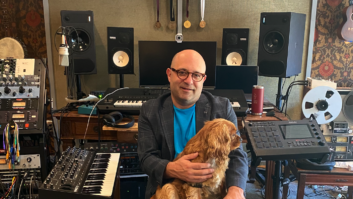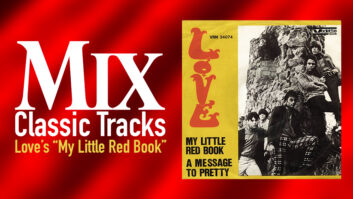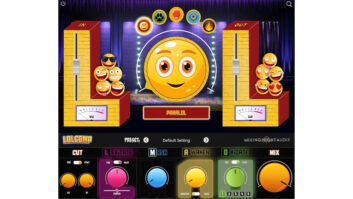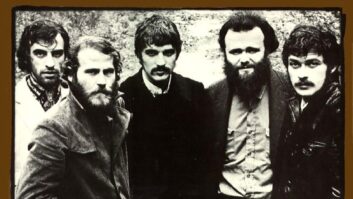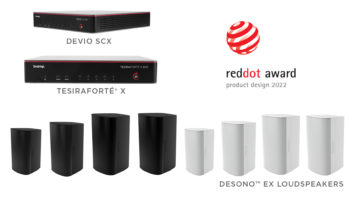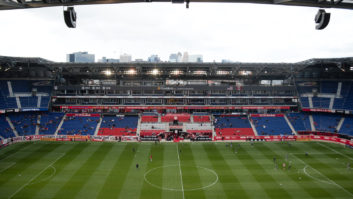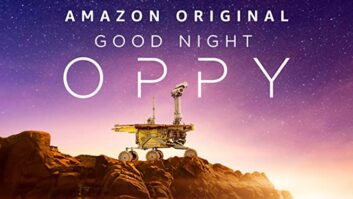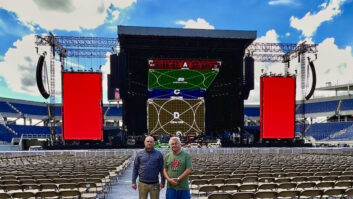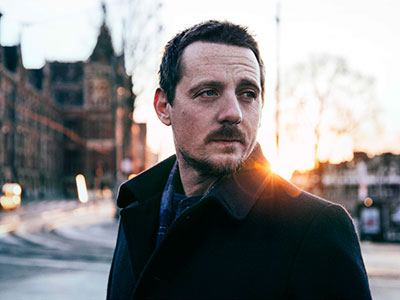
With his Top 10 country album, the Dave Cobb-produced Metamodern Sounds in Country Music (High Top Mountain, 2013), Sturgill Simpson endeared himself to classic-country fans. What a voice—almost like Waylon—and what a cool outlaw sound, not to mention his terrific original songs. Today, Simpson is often mentioned in the same breath as smash country star Chris Stapleton, also produced by Cobb.
But hold onto your hats. Simpson’s latest, a self-produced album called A Sailor’s Guide to Earth (Atlantic), leads fans into new territory. While his core band remains intact, and his voice is as beautiful and evocative as ever, Simpson’s new album incorporates a classical string section, sounds of the sea, and the old-school soul of the Dap-Kings horn section.
Simpson made A Sailor’s Guide with engineer/mixer/producer/bass player David Ferguson and his assistant engineer, Sean Sullivan, in The Butcher Shoppe, the Nashville studio that Ferguson co-owns with John Prine. Ferguson—who came up engineering for Cowboy Jack Clement and has worked with the likes of Prine, Johnny Cash, the Del McCoury Band, U2 and others—first heard Simpson’s music while he was on tour a couple years ago with Bonnie Prince Billy and Matt Sweeney.
“Will [Oldham, aka Bonnie Prince Billy] had both of Sturgill’s records and played them, and I was like ‘Oh, this is good! Who is this?’” he recalls.
The funny thing is, Ferguson had already met Simpson, at a card game at Dan Auerbach’s house. Auerbach had introduced his friends to “Sturgill,” but the engineer had no idea of Simpson’s music career at that point. However, they truly connected to make this unique album.
“He wanted to make a timeless record where the sounds were sweet, and it was always a concept record to him,” Ferguson says. “It’s a letter from a man lost at sea.”

Sean Sullivan and David Ferguson
To enforce the idea of being out at sea, some of the segues between songs include clips of waves, gulls and wind, and the odd bagpipe. But the foundation of the record was laid down by Simpson and his band.
“Our cutting room is about 30 by 28, and we put everybody out there in the room,” Ferguson says. “These are almost all live vocals; a big part of the drum sound is because it’s a live vocal and he’s sitting close to the drums. And he didn’t wear any headphones to cut. We had a little monitor speaker set up for him. “
Simpson told Ferguson he likes to sing into a beyerdynamic M 160 mic, which Ferguson appreciated. “Those ribbon mics will take a lot of sound pressure and they don’t leak very much,” Ferguson says. “You get any mic in a room with a bunch of drums, bass amps, and all that shit going on, and it helps to have a mic that doesn’t leak very much but has a warm, smooth sound.” Also in Simpson’s vocal chain: the same UA 6176 pre that Ferguson used with Johnny Cash, and a rented Fairchild 660.
On the songs that include acoustic guitar, such as the second track, “Breakers Roar,” Simpson plays while he sings and Ferguson captured his guitar with an AKG 451, into a UA 2-610 preamp, and to Pro Tools HD11.
“We also took a line off Sturgill’s guitar and ran that into a DI into the other side of the 2-610,” Sullivan says. “That was occasionally used to make the acoustic guitar stereo, or if we wanted to add an effect, we used that so we didn’t have to worry about the vocal bleed.”
On Laur Joamets’ electric guitar, Ferguson says, “We had a couple of amps hooked up at the same time. One was a Swart Atomic Space Tone, and the other was a Magnatone M10A. On particular mixes, we’d favor one or the other. But what I like to do, if the guitarist doesn’t mind vibrato, is to set the vibrato a little bit different [on each amp], and you really get a wide stereo sound when you pan them out.”

The Butcher Shoppe studio.
Ferguson favors Royer ribbons for electric guitar miking, through his API mic pre’s. “Those APIs have a lot of good headroom,” he says. “Then it’s straight to Pro Tools.”
Electric bass, played by Kevin Black and guest bassist Dave Roe, was captured via a combination of amp-miking and DI. “We had a Blue Mouse into a Retro Powerstrip for bass amp and upright,” explains Sullivan. “We just moved the mic around, depending on what was played. The DI was an Avalon U5 into an LA-2A.”
Miles Miller’s drums are miked up with a Sennheiser e602 on kick, Shure SM57s on snare top and bottom, an SM81 on hi-hat, and Sennheiser 421s on toms. Also on those core sessions were Jeff Crow and Bobby Emmett on keyboards, including B-3, (Rode NT4s on top, EV RE20 on the bottom); Wurly, Rhodes and a Moog synth (all taken with Countryman DIs); and an upright piano: “We use AKG 414s on the sound board,” says Sullivan. “Our upright has the hammers hardened to give it more of a percussive sound, but when you mike it from behind, you can get a lot warmer tone, and the added benefit of isolation.”
Ferguson brought in pedal steel player Dan Dugmore to add to the track, but Simpson wanted any steel work on the album to be subtle and special: “We had the Swart and Magnatone amps set up for Dan,” says Sullivan. “The Swart has a great, deep tremolo and reverb, and the Magnatone has a pitch-shifting vibrato that can get really swimmy. Those two amps together made for a unique sound. Dan really embraced Sturgill’s music. The way he interweaves with the strings is beautiful.”
The strings themselves, as well as the horn section, were recorded at Atlantic in New York City. “Sturgill said we need strings and horns, so we turn that over to [arranger] Jeff Steinberg, and he wrote the strings and horn parts. He really likes the Dap-Kings, so we called New York, and the powers that be said, ‘Sure, make it happen.’ I have to say, I’ve got nothing but praise for Atlantic on this record. They never said no to anything,” Ferguson says.
Ferguson and Simpson brought some of The Butcher Shoppe’s ribbon mics to New York, and then spent one full day on strings and one on horns. “I think there were three actual written horn charts, and then Sturgill and the horn players came up with ‘head charts’ for a couple of songs,” Ferguson recalls. “They said we were the first session in their new studio up there, but they had a 67 from the old studio that we used, and they had outboard API 412s. Strings went the same way, but we used condenser mics on strings—maybe a ribbon on the cello.”
Ferguson took those tracks back to The Butcher Shoppe to mix. Among his arsenal of tools on this project: an Ampex 2-track machine that came out of the former Studio by the Pond (Hendersonville, Tenn.) that he uses for slapback, and an EMT 140 plate reverb from the Grand Ole Opry. Ferguson also used the SoundToys Crystallizer plug-in, as well as Waves’ ADT doubler, and various UA plug-ins and outboard pieces.
Ferguson also added the sea sounds during the mix phase. “We did a lot of that, but we wound up cutting it way down before we went to mastering, because Sturgill wanted to keep it moving,” Ferguson says. “He wanted to make a painting, but he wanted to focus on classic sounds.”
